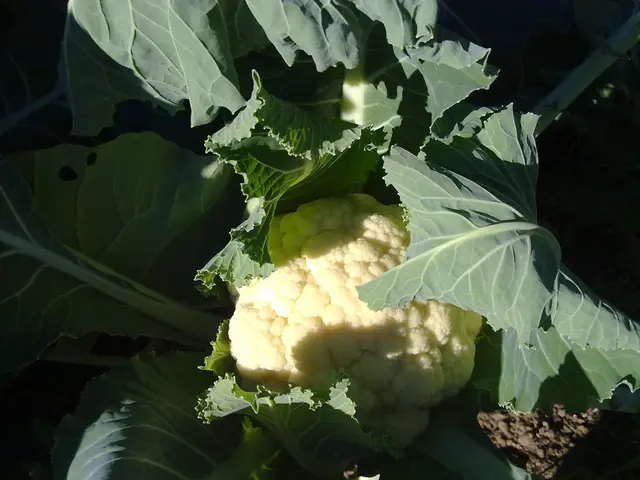Drug abuse jeopardizes the effort to reduce AIDS-related fatalities and HIV transmissions.
In Kenya, a growing concern surrounds the rise of drug abuse, particularly heroin use and HIV infection among people who inject drugs (PWID). The situation is highlighted by alarming statistics and trends that pose a significant public health challenge.
Youth and university students are particularly affected, with over half of drug users in Kenya being aged between 10 and 19 years. The most commonly abused substances among this demographic are nicotine, alcohol, and cannabis. Among university students, 45.6% have used at least one drug or substance in their lifetime, and 26.6% are actively using substances including alcohol, tobacco, cannabis, khat, methamphetamine, and codeine syrup.
Heroin use prevalence is not detailed, but injection drug use is a significant concern as it directly contributes to HIV infection risks. PWID are recognized as a key population at high risk of HIV, with approximately two out of ten testing positive for HIV. This is considerably higher than the general population and underscores PWID as a major driver of new HIV infections in the country.
Cannabis use has nearly doubled in the last five years, with Nairobi, Nyanza, and Coast regions showing a significant increase. Polydrug use is also on the rise, with at least one in every 15 Kenyans engaging in it; the Coast region shows the highest prevalence at 10.5%.
The Coastal region, in particular, has seen a drop in the average age of drug users, with use cutting across different social-economic statuses. This is exemplified by the story of Abdullahi Noor, a harm reduction advocate and founder of Ngaza Mwangaza Global, a rehabilitation center. Noor encountered two brothers who were struggling with drug addiction, one of whom was HIV positive. The elder brother, fearing for his younger brother's safety, refused to share his contaminated needle. Tragically, the younger brother, desperate for a high, became violent and insisted on using the same needle, which led to him contracting HIV. The younger brother passed away from Aids-related complications in 2020 at the age of 25, and the elder brother passed away a year later aged 38.
The Kenyan government has adopted policies to curb alcohol and drug abuse among youth, enhancing the National Authority for the Campaign Against Alcohol and Drug Abuse (NACADA)'s mandate in education, research, law enforcement, and rehabilitation. However, challenges remain, including limited treatment coverage and stigma affecting health service access.
In response, initiatives such as the Nairobi Street Children's Development Centre (NSDCC) are mobilizing resources to empower recovering drug users economically and train them as peer educators. Miritini Rehabilitation Centre, which currently supports at least 359 individuals on methadone treatment daily, some of whom are living with HIV, offers a wide range of care, including antiretroviral therapy (ART), PrEP, and treatment for TB, malaria, and Hepatitis B and C.
The fight against drug abuse and HIV infection among PWID is a complex issue that requires a multi-faceted approach. Methadone alone is not enough for recovery, it must be coupled with counselling, therapy, and spiritual support, according to Gachoka. In addition, addressing the root causes of drug trafficking and ensuring pharmacies follow the law in selling psychotropic drugs are crucial steps in addressing this issue.
References: [1] Ministry of Health, Kenya (2019). Kenya National Drug Control Master Plan 2019-2023. Nairobi: Government Printer. [2] National AIDS and STI Control Programme (2016). Kenya HIV Estimates 2016. Nairobi: Government Printer.
- Despite the rising concern over drug abuse in Kenya, the health and wellness sector is also focused on promoting fitness and exercise, nutrition, and mental health.
- The prevalence of chronic diseases such as chronic kidney disease, COPD, type-2 diabetes, and cancer is growing, requiring extensive therapies and treatments in the medical-conditions category.
- The environment, notably climate change, is a critical aspect of environmental science, impacting both human health and the emergence of skin conditions.
- There is a growing need for proper skin care, with psoriasis being one of the conditions affecting eye-health and hearings.
- In the digital age, information about health, including Epaper articles on health and wellness, plays a significant role in raising awareness about various health topics like autoimmune disorders, Alzheimer's disease, multiple sclerosis, and migraines.
- Aging, along with its associated health issues, such as cardiovascular health, is a concern in the utility of therapies and treatments, especially medications like methadone.
- The rise in drug abuse and HIV infection among people who inject drugs (PWID) is not just a health issue but a social problem, particularly for parents faced with the challenge of passing on positive parenting practices.
- The situation worsens as weight management becomes a concern for individuals dealing with drug abuse and HIV, increasing the risk of numerous chronic diseases.
- The education sector, especially universities, needs initiatives to address drug abuse and ensure students prioritize their digestive health and sexual health.
- The nation's overall well-being is at stake as youth are particularly susceptible to drug abuse, which impacts their sleep patterns, energy levels, and ability to perform well at work and school.
- Neurological disorders, such as those resulting from heroin abuse and HIV infection, are gaining attention in the neuroscience field, seeking new treatments and understanding their cause.
- In the space and astronomy sector, researchers aim to discover potential treatments for diseases like cancer, Alzheimer's, and HIV by studying the effects of space on the human body.
- The government's initiatives in teaching about nutrition and fitness and exercise are essential to helping people make healthier lifestyle choices and steer clear of drugs.
- The rise in polydrug use among Kenyans is troubling and highlights the need for increased awareness about the dangers of using multiple substances simultaneously, affecting cardiovascular health.
- The stories of individuals struggling with drug abuse, such as Abdullahi Noor and his encounter with the two brothers, serve as reminders of the personal and intimate toll drug abuse takes on families and loved ones.
- The sharing of needles among drug users can lead to contamination and the spread of diseases like HIV, emphasizing the importance of sexual health education and safe practices.
- Healthcare facilities should ensure they provide adequate treatment coverage for various medical conditions, including respiratory conditions like COPD, and remove stigma surrounding the access of services to prevent further infections among high-risk populations.
- As the average age of drug users decreases in specific regions, like the Coastal region, it is crucial to address the root causes of drug trafficking to protect the health of future generations.
- In addition to methadone, peer support, counseling, and therapy are essential components of recovery programs that help individuals cope with the emotional and psychological issues of drug abuse and HIV infection.
- The fight against drug abuse and HIV infection requires a comprehensive approach, addressing social, economic, and political factors, and working towards reducing stigma in order to improve overall health and well-being in Kenya.








